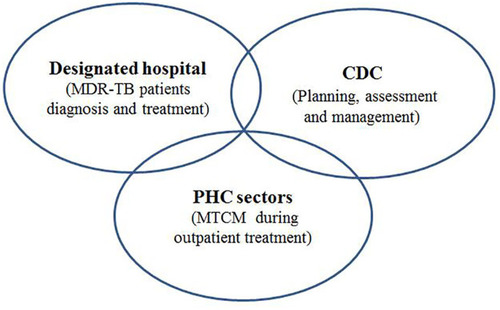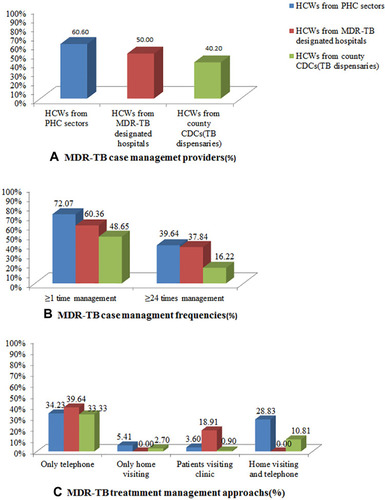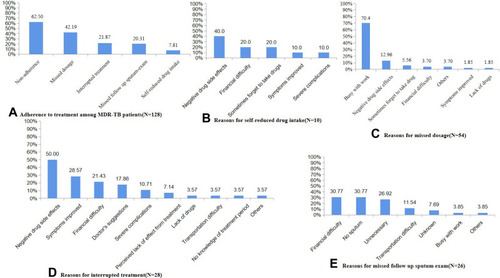Figures & data
Figure 1 Integrated model for MDR-TB patients. This figure presents the integrated model of MDR-TB control. MDR-TB designated hospitals provide diagnosis and treatment and inpatient MTCM for MDR-TB patients. Centers for Disease Control and Prevention (CDCs) provide planning, assessment and case management related to MDR-TB control. Outpatient MTCM is mainly provided by health care workers (HCWs) in PHC sectors, including community health centres (CHCs) in urban areas as well as township hospital centres (THCs) and village clinics in rural areas.

Table 1 Demographic, Socio-Economic and Clinical Characteristics of MDR-TB Patients in Chongqing
Figure 2 Status of MDR-TB case management. This figure presents the type of provider, frequency of case management contact and methods of MDR-TB case management (MTCM) by HCWs from PHC sectors, MDR-TB designated hospitals or county CDCs (TB dispensaries). (A) presents the percentage of MDR-TB patients who received MTCM from CDC (TB dispensaries), MDR-TB designated hospitals and PHC sectors. (B) presents the percentage of MDR-TB patients who received different frequencies of MTCM from HCWs from PHC sectors, MDR-TB designated hospitals or county CDCs (TB dispensaries). (C) presents the percentage of MDR-TB patients who received MTCM through the different methods.

Figure 3 Status and reasons of poor adherence behaviors for MDR-TB patients. This figure presents the adherence to anti-TB treatment among MDR-TB patients (A), self-reported reasons for self-reduced drug intake (B), self-reported reasons for missed dosage (C), self-reported reasons for interrupted treatment (D), and self-reported reasons for missed follow-up sputum-exam (E).

Table 2 Multivariate Logistic Regression Analysis of MTCM
Table 3 Multivariate Logistic Regression Analysis of Poor Adherence Behaviors
Table 4 Qualitative Results About MDR-TB Treatment Adherence and Management
